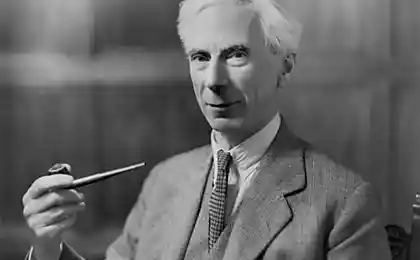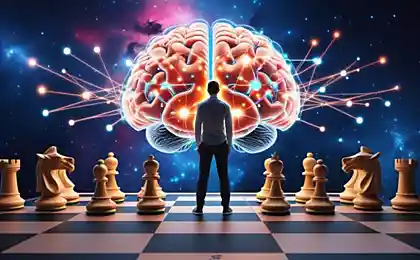151
The paradox of transformation: Why “become first, then get” is the key to success

In the pursuit of success, we often make one fundamental mistake: believing in the formula “first I’ll have something, then I’ll be so-and-so.” This inverse logic leads millions of people to frustration and endless pursuit of the horizon. Why do most of us fall into this trap, and how do we get out of the cycle of unfulfilled expectations?
The main strategic mistake in building a life and a career is the wrong sequence: “I’ll get it first, then I’ll change.” The true law of transformation works differently: You must first become the one who deserves the desired result, and only then will the result come as a natural consequence.
A common misconception is, “When I have X, then I’ll be Y.”
We see this logical error everywhere. “When I get promoted, I’ll start working more efficiently.” “When I make a million, I’ll start investing wisely.” “When I meet the perfect partner, then I will be attentive and loving.” Familiar?
Research in behavioral psychology shows that about 92% of New Year’s resolutions fail precisely because people focus on the outcome (what they want to get) rather than changing themselves (what they should become).
“You must be the change you want to see in the world.” – Mahatma Gandhi
This mistake is especially insidious because it seems logical at first glance. However, it creates a dependence of our personal transformation on external circumstances that may never occur or are constantly pushed away.
Why “I’ll get it first, I’ll change it” doesn’t work
1. The Law of Attraction of Reality
Like a magnet, you attract into your life what corresponds to your inner state. If you think and act like someone who deserves a certain level of success, the outside world will react accordingly.

Research on brain neuroplasticity shows that when you start acting in a certain way, your brain forms new neural connections that gradually make new behaviors automatic.
2. The paradox of preparedness
When sudden success comes to a person who is not internally ready for it, it often ends in disaster. A striking example is the history of lottery millionaires, 70% of whom go bankrupt within 5 years of winning.
Work on yourself is a kind of “training vessel”, in which success can then fit without the risk of “overflowing over the edge”.
3. Self-sabotage of unprepared consciousness
Our subconscious mind does not allow us to hold on to things that contradict our deep self-image for a long time. If you feel unworthy of a certain level of well-being or relationship, you will unconsciously sabotage your success.
The correct formula is “Become first, then get it.”
True transformation happens from the inside out, not the other way around. As you change your thinking, habits, and identity, external circumstances begin to adjust to a new version of you.
Practical steps towards transformation:
- Identify who you need. becomeTo get what you want (instead of focusing on what you want)
- Make a list of specific habits and behaviors of this new version of yourself.
- Start these habits now, without waiting for the “right moment”
- Practice visualizing yourself in a new identity
- Find role models and mentors who embody the desired qualities
An example from the business world
Steve Jobs did not wait for Apple to become a billion-dollar company to start thinking innovatively and demanding excellence. He practiced these qualities from the beginning, when the company was still in the garage. He was already what he wanted to be, and his results were a natural extension of that inner position.
An example of a relationship
Many single people mistakenly believe, “When I meet the perfect partner, then I’ll be more loving, attentive and open.” In fact, it works the other way around – by developing these qualities now, you become a magnet for healthy relationships.

Breaking the vicious circle
Most people find themselves in a vicious circle, waiting for certain conditions to begin transformation. These conditions never occur, leading to frustration and even greater resistance to change.
Action: Identify the one quality of a successful person that you want to have, and act as if you already have it – today, without waiting for external changes.
Stanford University professor Carol Dweck, in her study on the “growth mindset,” showed that people who focus on developing their abilities (instead of waiting for external conditions) achieve significantly greater results in the long run.
Psychological barriers and how to overcome them
1. Fear of failure and rejection
Changing yourself is often fearful: what if the new version of me is rejected by others? What if I fail in my new role?
Internal resistance is our brain’s normal response to change. Overcome it through small but regular steps toward your desired identity.
2. Impostor syndrome
Many successful people admit that they have long struggled with the feeling that they are “cheaters” who do not deserve their success. This phenomenon is known as “impostor syndrome” and can seriously interfere with your transformation.
Keep a diary of achievements, regularly recording all your successes, even the smallest. This will help you realize real progress and strengthen your new identity.
3. Social environment
Your current environment may unknowingly sabotage your changes as they disrupt the established status quo. Remember, your environment should be what you want to be, not what you used to be.
“You become the arithmetic average of the five people you spend the most time with.” Jim Rohn.
Specific transformation strategies
Reverse engineering of success:
- Determine the specific outcome you want to achieve
- Find people who have already achieved this result.
- Study their thinking, habits, beliefs, behavior
- Start incorporating these elements into your life before you get results.
- Record internal changes, not just external achievements
A Duke University study found that up to 45% of our daily activities are habits. Changing key habits is the fastest way to a new identity and, as a result, to new results.
Act as if technique
Psychologists recommend the “Act as if” technique when you begin to behave as if you were already who you want to become. It’s not pretense — it’s a form of active learning through experience that gradually changes the neural connections in your brain.
Action: Make a detailed portrait of the person you want to become. How does this man think? How do you make decisions? How does the day start and end? What questions does he ask himself?
Signs of successful transformation
How do you know that you are on the right path? Here are a few signs:
- You notice changes in your automatic reactions.
- Previous “difficult” actions have become easier
- People are beginning to notice changes in you.
- You attract new opportunities without much effort.
- Your decisions become more intuitive and accurate
The main secret of true transformation lies in understanding causality: your being determines your achievements, not the other way around. When you change your inner state—thinking, beliefs, habits, identity—the outer world begins to react accordingly.
Don’t wait for the perfect conditions to become the best version of yourself. Start the process now and the results will follow as a natural consequence of your inner transformation.
Glossary of terms
Neuroplasticity
The ability of the brain to change throughout life by creating new neural connections in response to learning or experience.
Identity
The totality of a person’s ideas about himself, including beliefs, values and characteristics that determine who a person thinks he is.
Growth setting
A concept developed by psychologist Carol Dweck describes the belief that abilities and intelligence can be developed through the efforts, strategies, and help of others.
Impostor syndrome
A psychological phenomenon in which a person cannot accept their achievements and is constantly afraid of being exposed as a “fraudster”.
Reverse engineering method
A strategy for analysing a successful outcome to identify the processes and actions that led to that outcome for subsequent replication.
Law of Attraction
A philosophical concept that states that like attracts like, and that the focus of attention and the inner state of a person determines the circumstances and opportunities that they attract.























